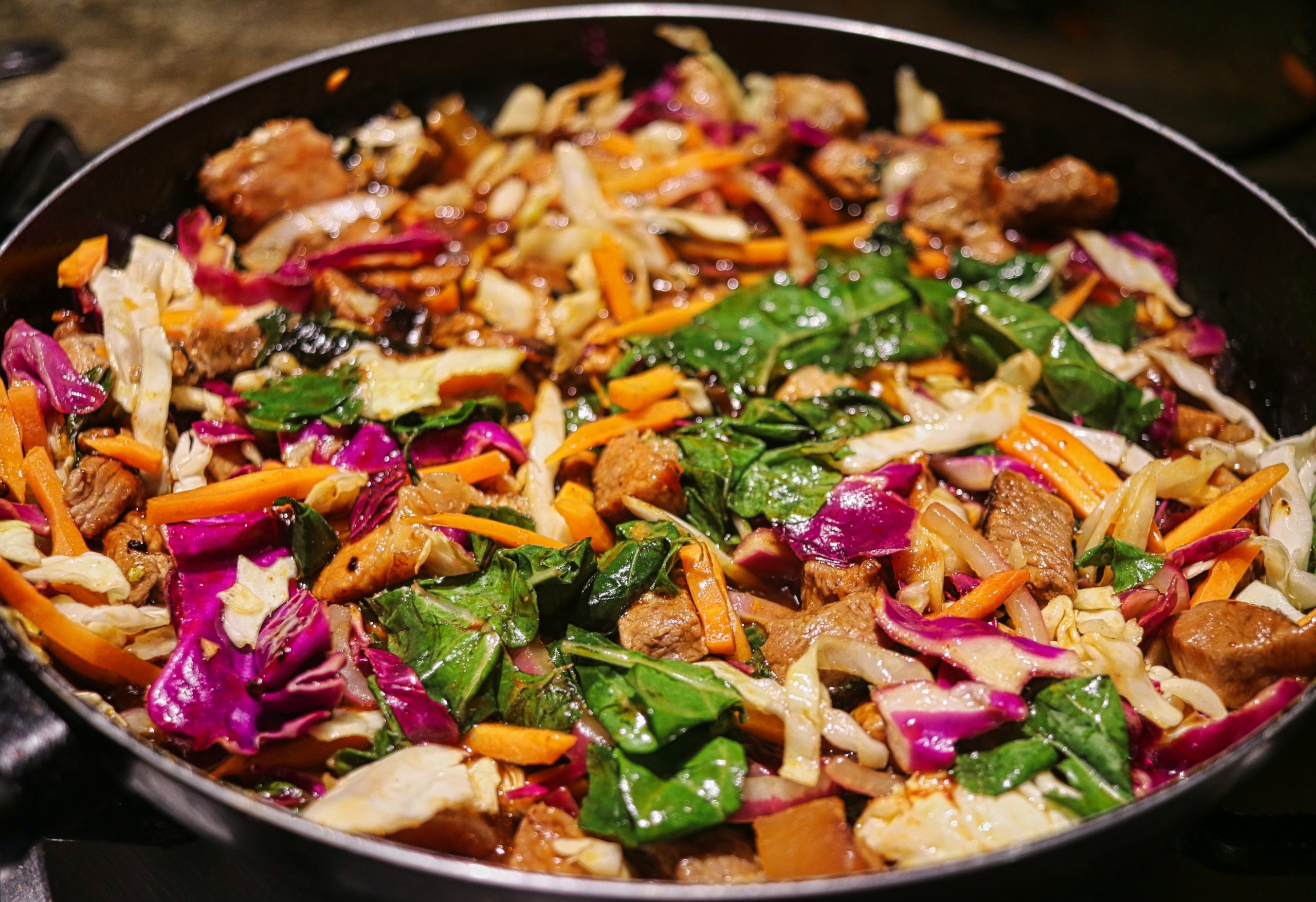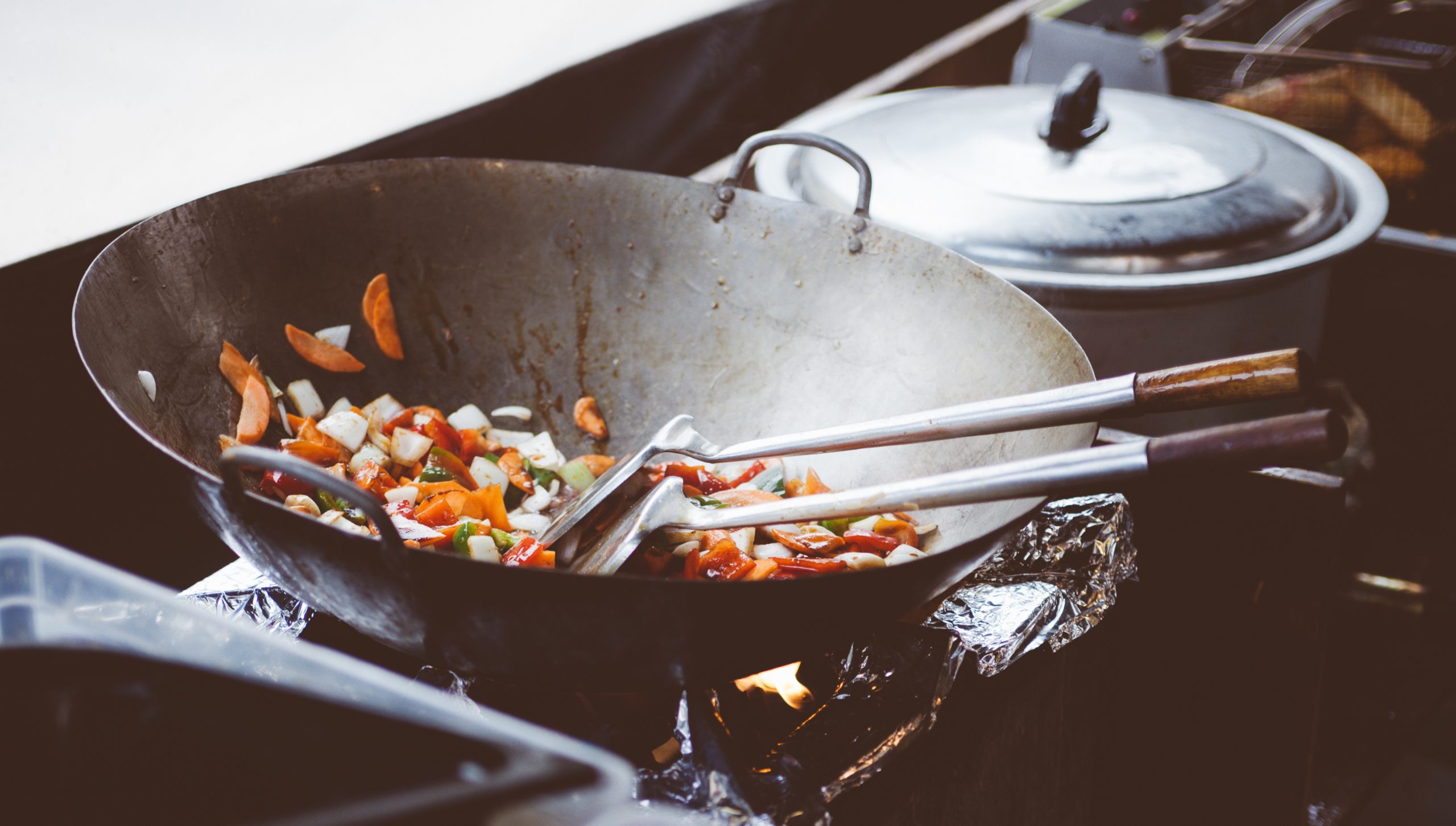You can follow a few simple guidelines if you want to make a stir fry with frozen vegetables. This article will look at the Ingredients, Preparation, and Sauces. We’ll also cover how to use Soy sauce to make your stir fry with frozen vegetables taste great!
You’ll enjoy preparing frozen vegetable stir fries for dinner, lunch, and meal prep. They’re incredibly simple to prepare. In one skillet, frozen vegetables and a homemade stir-fry sauce combine to create mouthwatering bites of flavor.
How to Cook Stir Fry with Frozen Vegetables?
Probably the simplest stir fry recipe you’ll ever prepare is this one with frozen vegetables. And it’s quite inexpensive! You can prepare this dish in just 20 minutes by combining the best homemade stir-fry sauce with a straightforward mixture of pre-cut frozen vegetables.
Ingredients
If you want to save time in the kitchen, stir fry with frozen vegetables is an excellent option. This simple dish is quick to prepare and uses high heat to add flavor and texture. Make sure to cook the vegetables on high heat so the outside is caramelized and the interior remains crisp.
You can make this dish in 20 minutes. It’s packed with veggies and tastes delicious! It’s also one of the best work-from-home lunch recipes.
- Packaged frozen vegetables
- Soy Sauce
- Peanut Butter
- Sesame oil/Olive oil
- Garlic powder
- Water Chestnuts
Preparation
Preparation of stir fry with frozen vegetables can save time and effort. However, it is important to follow a few steps to avoid making the stir fry soggy.
- For starters, it is important to pat down the vegetables before cooking them. This will reduce the amount of water in the stir fry.
- Secondly, patting down the vegetables also helps to remove some of the ice that can be found in the frozen vegetables. Also, it would be best to use high heat when cooking the vegetables.
- You can add different seasonings to your stir fry to add more flavor. For example, you can add roasted sesame seeds or toasted nuts. You can also add some fragrant spices like garlic or ginger. These will add a deeper flavor and reduce the cooking time.
Sauces
Stir fry recipes can be made easily and quickly with pre-packaged frozen vegetables. You can use fresh vegetables, too, but they will be much mushier if you use them after thawing.
You can make your sauce by combining soy sauce, agave, sesame oil, and vegetables. It takes about 5 minutes to make and can be poured over frozen stir fry mix.
- Once the vegetables are cooked, add the sauce and cook for about three to four minutes. The vegetables should be tender but not mushy.
- You can also add protein, like crispy roasted tofu or chicken.
- Another quick and easy stir fry recipe is canned salmon or tuna.
- Leftovers keep well in the refrigerator for several days or can be frozen for up to two months.
Soy Sauce
Using soy sauce to cook stir-fry with frozen vegetables is an easy way to make a healthy and delicious side dish. This recipe also allows you to make a quick meal and is quick to prepare.
- To make this recipe, you will need a skillet and some oil.
- Once the skillet is hot, add the vegetables and stir-fry for 5 to 7 minutes. Stir in the soy sauce and peanut butter.
- To prepare the stir-fry sauce, you will need about one and a half cups of soy sauce.
- Stir the sauce into the stir-fry until it reaches the desired consistency.
- To make the sauce even thicker, add about 1/2 teaspoon of cornstarch.
- If you don’t have soy sauce, you can substitute coconut liquid aminos or another sauce.
- Once cooked, the stir-fry sauce will keep in the refrigerator for three to four days. You can also freeze leftovers for later use.
Peanut Butter
Frozen vegetables are a great way to add more nutrients to your pan-Asian meals. Frozen vegetables are also convenient and nutritious because they come already prepared. If you want to add even more nutritional value, try adding peanut butter to your stir-fried vegetables. It is also possible to add brown rice for a complete pan-Asian meal.
A good peanut sauce has a creamy consistency that compliments any vegetable. It can be made with a high-speed blender or by hand, depending on your experience. If mixing by hand, make sure to mince the ginger and garlic ahead of time.
Water Chestnuts
Water chestnuts are low in fat and calories, making them a great addition to your stir-fry. They are also high in fiber and contain many vitamins and minerals. They also have flavonoids, which are great for your heart and fight free radicals. They also fight oxidative stress.
To prepare water chestnuts for cooking, trim off the tough outer shell and wash them under cold water. Once trimmed, place them on a baking sheet covered with aluminum foil. You can place a cooling rack on the baking sheet to catch the drippings. Water chestnuts can also be peeled and marinated in soy sauce for at least an hour before cooking.
Serving Advice
This quick vegetable stir fry must be served over cooked rice, quinoa, noodles, or another grain. Despite being full, stir fry pairs well with other Asian-inspired dishes like fried rice, spring rolls, and vegan beef and broccoli.
Should Frozen Vegetables be Thawed Before Stir-Frying?
Before cooking, the frozen vegetables don’t need to be thawed. Place them into a very hot wok or large skillet.
- Select the proper pan—ideally, a wok. The more surface area, the faster the vegetables cook and maintain their crispness. A 12-inch-diameter big skillet can also be used.
- Before adding the vegetables, heat the pan on high. Add your oil and begin frying when it barely starts to smoke.
- To ensure speedy defrosting and consistent cooking, stir the frozen vegetables frequently.
After removing the skillet from the heat, mix in fresh greens like spinach or kale if you have any on hand. On your dish, they will offer even more color and nutrition when the remaining heat slowly wilts them.
How Long does it Take to Stir-Fry Frozen Veggies?
Cooking vegetables in a skillet is a terrific way to prepare them fast and keep the great taste, texture, and nutrients your veggies deserve. Here’s how to sauté your vegetables:
- Put your bag of frozen vegetables on medium-high heat in a skillet.
- Stir and add one tablespoon of cooking oil of your choice (such as olive oil) to the pan.
- Cook, stirring periodically, for 5-7 minutes or until thoroughly cooked.
How can Frozen Vegetables be Stir-Fried without Getting Soggy?
Have you ever tried to stir-fry frozen vegetables and had them turn out mushy and limp? If the pan has too much water, that may occur. If frozen, they will have ice on them, which melts during cooking and fills the pan with water. Use the same technique when thawing frozen vegetables in the oven.
Prolling the frozen vegetables as much as possible will help reduce the water used and how soggy the vegetables become. Even while you might not be able to get all of the ice out, you can still remove part of it to reduce the likelihood that the cooked vegetables will be soggy.
What is the Best Method for Preparing Frozen Vegetables?
While there isn’t a single manner that everyone prefers to cook frozen vegetables, we advise using the stovetop as the “optimal” cooking method. The greatest flavor and texture are always guaranteed when cooking frozen vegetables on the stovetop. You may also cook them on the barbecue or roast them in the oven as a backup option. Vegetables prepared using these three methods will taste better than those prepared by boiling, steaming, or microwaving.
A Short Guide to Grilling Frozen Vegetables
For summertime family dinners or outdoor barbecues, grilling veggies is ideal. Even better, the kitchen doesn’t have a mess to clean up! What you should do to get great grilled vegetables is as follows:
- Put some tin foil or a vegetable basket with frozen vegetables inside and drizzle some olive oil over it.
- To prevent the vegetables from sticking or charring, turn or stir them as they cook on the grill over medium-high heat.
Fast Directions for Baked Or Roasted Frozen Vegetables
You can also bake or broil frozen vegetables to add them quickly to any meal. Follow these steps to roast frozen vegetables in the oven:
- Between 400 and 450 degrees Fahrenheit for your oven’s preheating.
- While the oven is heating up, put a thin layer of olive oil on your roasting pan and put it in the oven. A hot pan makes it easier for the vegetables to cook and defrost.
- Add your vegetables to the roasting pan in a single layer after tossing them in coconut or olive oil.
- Cook for 20 to 25 minutes, turning once.
Is Vegetable Stir Fry Good for You?
Yes! Ginger is a tasty spice that also reduces inflammation. It is devoid of any additional sugar and is loaded with a wide variety of veggies. Because there is a relatively minimal amount of oil used, the fat is low. Both Whole30 and a diet free of soy can be readily accommodated with this recipe.
Conclusion
What vegetables should you start sautéing first if you are cooking more than one vegetable simultaneously? Preparing the most difficult veggies, such as sweet potatoes, carrots, or cauliflower. In addition, onions require a considerable amount of time to cook, in contrast to other vegetables such as zucchini and squash, as well as garlic, which requires even less time.


